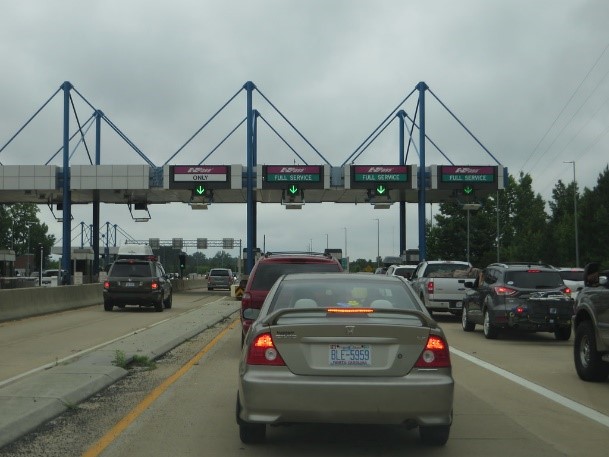By Shelia Dunn, NMA Communications Director
The website Chief Investment Officer posted in June a lament for how tough it is for toll roads right now. Here’s a quote, “The typically stable asset class has been hit as traffic levels have dropped 40 percent to 85 percent globally, S&P analysts say.”
So the website tells pension fund lenders to steer clear of toll roads for the time being. It should take a year or more for toll roads to recover from the current crisis. Drivers are skipping toll roads because they are either not driving or have the money to drive a tolled road.
For years, toll road investors and operators have been making cash hand over fist and much of the time in a Public-Private Partnership. The fear that some toll operators who do not have liquidity might default (as has happened many times before) and guess who has to then finish paying for the toll road—taxpayers. And not only that, motorists will likely have to pay more and more at the toll booth.

When we have a debate on the funding for current and future infrastructure, tolls always seem to be at the top of the list, but maybe not this time.
The Alliance for Toll-Free Interstates recently wrote a letter in support of the Invest in America Act, which actually abandoned tolling pilot programs and put guardrails on tolls in their proposal. The Alliance said this about tolls overall:
“Tolls are the worst funding mechanism available and are a highly inefficient use of funds, as a significant portion of every dollar collected—typically 12-20 percent even with all-electronic tolling—goes to private sector profits rather than building and repairing roads. Tolls hurt businesses, communities, and economies where they are located.”
But not every toll road is supposedly a for-profit enterprise, and other schemes come into play by state governments.

During the recent COVID-19 crisis, the Pennsylvania Turnpike Authority, a not-for-profit toll road, had traffic volume decline by half and has stated that it expects to have a revenue drop between $400 to $500 million this year.
Pennsylvania has raised its toll rates 12 years in a row. It already costs nearly $53.50 for a passenger vehicle to travel across the state. To date, more than 144 miles of its roadway system, which turned 80 in 2020, have been reconstructed. Most taxpayers are under the impression that when we pay tolls, the funds collected go towards operating and maintaining the toll roads. In Pennsylvania, that is not the case.
A couple of years ago, OOIDA (Owner-Operator Independent Drivers Association), several trucking firms, and the National Motorists Association sued the Pennsylvania Turnpike Commission claiming that the tolls were excessive and hampered interstate commerce. The rub really focused on the fact that the Authority had to turn over a great deal of toll money to the PA DOT for projects that had nothing to do with the turnpike. The class action lost its appeal with the US Supreme Court early this year.
What recourse as taxpayers and motorists do we have?
Drivers already pay a state and federal gas tax. When we pay for a toll—we pay for the road twice. Our elected officials claim that the gas tax is not bringing the cash we need to maintain and build road infrastructure. Now, the push is on to start charging drivers for every mile we drive—which is definitely a toll that we all thought we left behind when we were still riding horses when traveling on private roads and crossing over bridges.
The tough time ahead is not for toll road investors and operators, the tough time ahead is for those who travel on toll roads—make no mistake about it!

NMA also has resources that might help in local efforts to fight tolls and fight for proper funding of infrastructure.
- NMA Tolls Issue Page
- NMA Principle Number 6: Reasonable highway user fees for maintaining and improving highways, not for financing non-highway projects
- E-ZPass is Anything But: A Motorist’s Viewpoint
- Paying More for Less Service: NMA E-Newsletter #534
- Some numbers to chew on
- Is an Infrastructure Apocalypse on the Horizon?
- Taking Tolling to Task: NMA Weekly E-Newsletter #480
- No More Toll Roads
- Congestion Pricing Cannot be the Future of Transportation Funding, Part 1: NMA E-Newsletter #468
- Congestion Pricing Cannot be the Future of Transportation Funding, Part 2: NMA Weekly E-Newsletter #469
Want to keep track of the many issues currently involved in tolls and other infrastructure funding? Take a daily peek at the NMA’s Driving News Feed or subscribe to Driving News Daily, a five times per week email.







